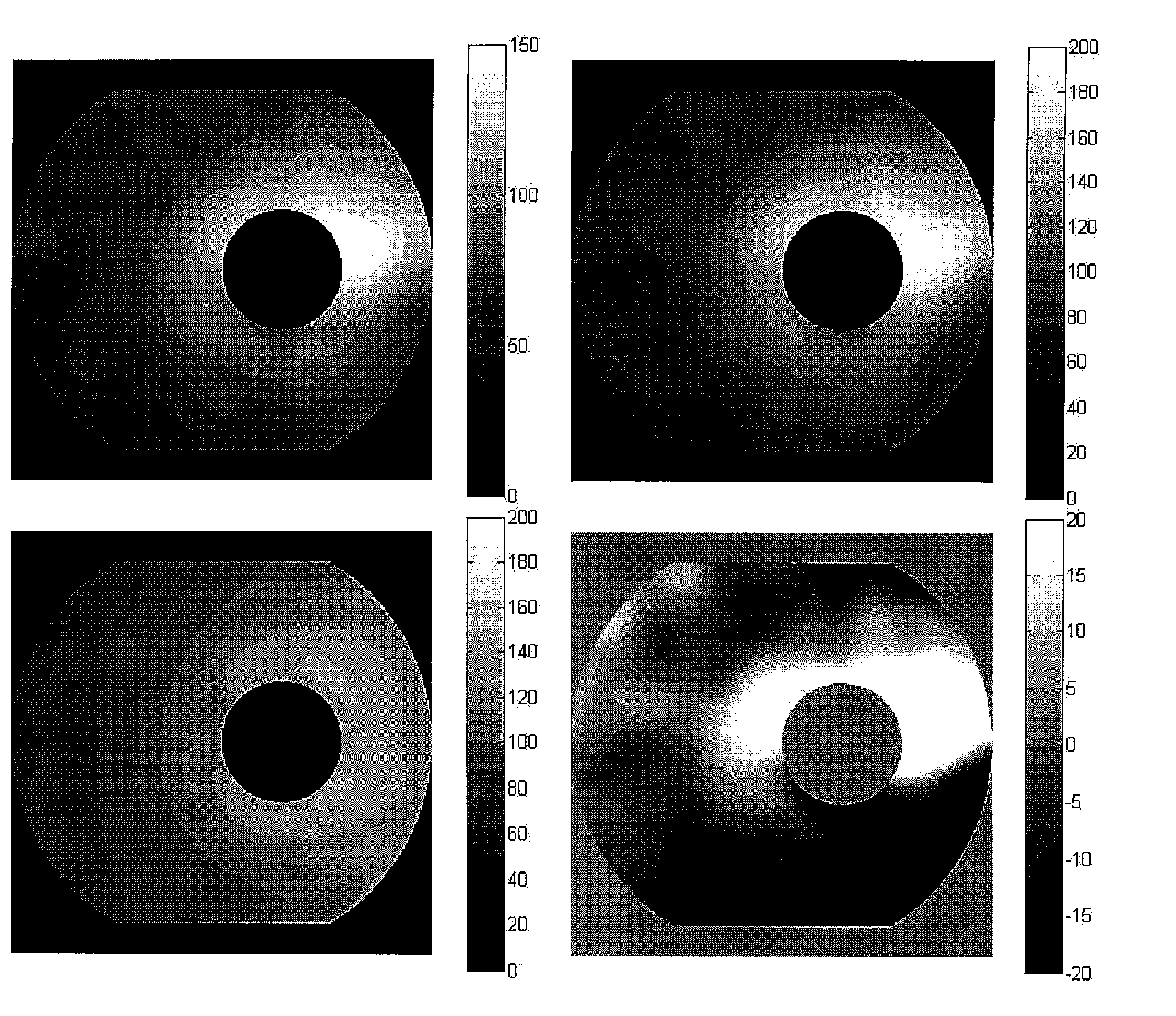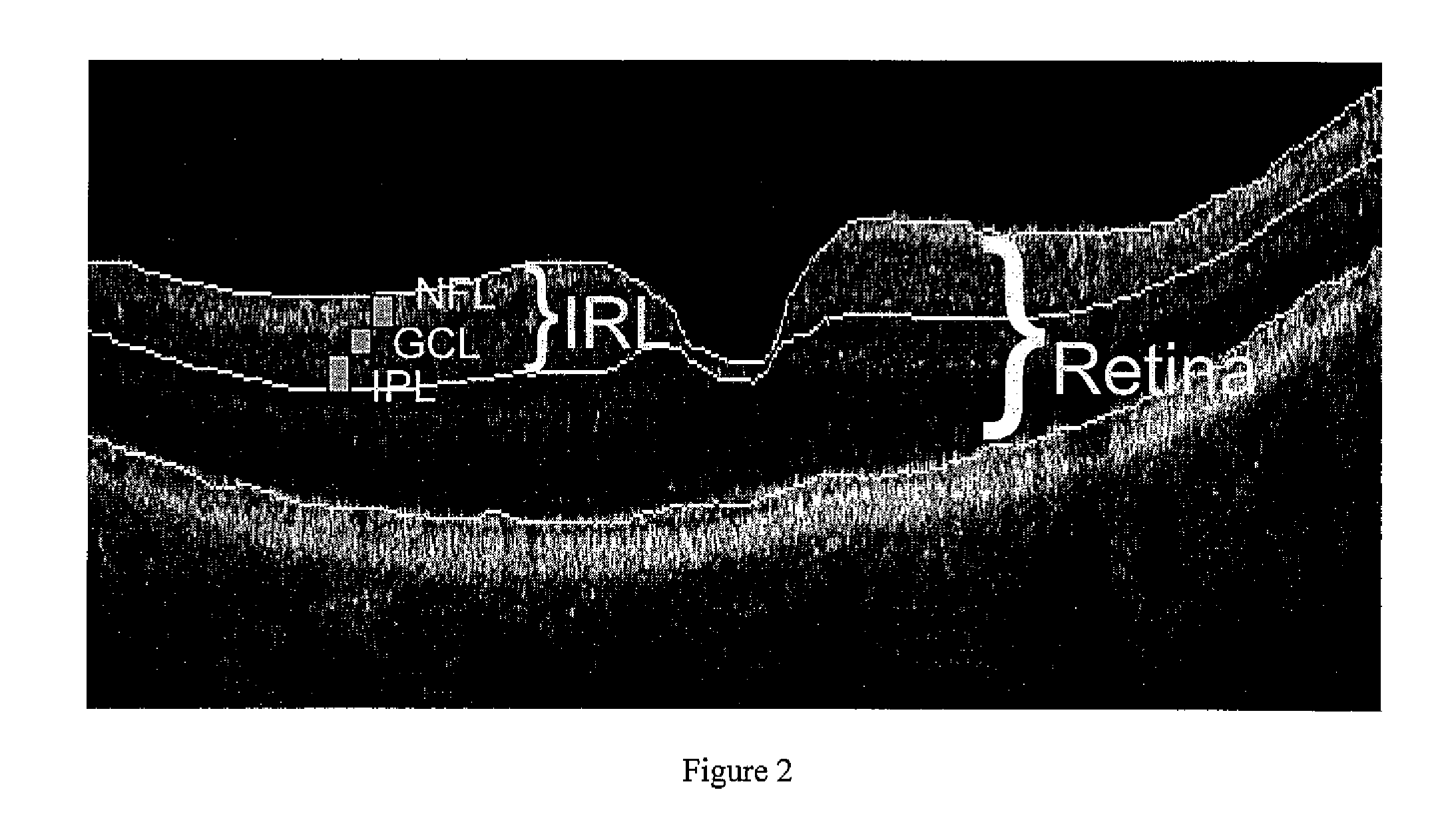Pattern analysis of retinal maps for the diagnosis of optic nerve diseases by optical coherence tomography
a technology of optical coherence tomography and retinal maps, applied in the field of ophthalmology, can solve the problems of difficult clinical examination detection of nfl bundle defects, difficult to easily utilize knowledge in diagnostic methods, and difficult to achieve high-quality construction
- Summary
- Abstract
- Description
- Claims
- Application Information
AI Technical Summary
Benefits of technology
Problems solved by technology
Method used
Image
Examples
example
Detection of Macular Ganglion Cell Loss in Glaucoma
Methods
[0099]Participants in the prospective Advanced Imaging for Glaucoma Study (AIGS) between the periods of 2003 and 2007 were included. These participants were classified into four groups: normal (N), perimetric glaucoma (PG), glaucoma suspect (GS) and pre-perimetric glaucoma (PPG). Only the data from the baseline visit was used. The GS group was not used in this study because the members' glaucoma status was indeterminate. We used only data from AIGS centers that employed FD-OCT during the study period. The eligibility criteria for the three groups analyzed are briefly described below.
[0100]The N group participants had intraocular pressure (IOP) of less than 21 mm Hg for both eyes, a normal Humphrey SITA 24-2 visual field (VF) [mean deviation (M) and pattern standard deviation (PSD) within 95% limits of the normal reference and a glaucoma hemifield test (GHT) within 97% limits], a central corneal thickness≧500 ...
PUM
 Login to View More
Login to View More Abstract
Description
Claims
Application Information
 Login to View More
Login to View More - R&D
- Intellectual Property
- Life Sciences
- Materials
- Tech Scout
- Unparalleled Data Quality
- Higher Quality Content
- 60% Fewer Hallucinations
Browse by: Latest US Patents, China's latest patents, Technical Efficacy Thesaurus, Application Domain, Technology Topic, Popular Technical Reports.
© 2025 PatSnap. All rights reserved.Legal|Privacy policy|Modern Slavery Act Transparency Statement|Sitemap|About US| Contact US: help@patsnap.com



